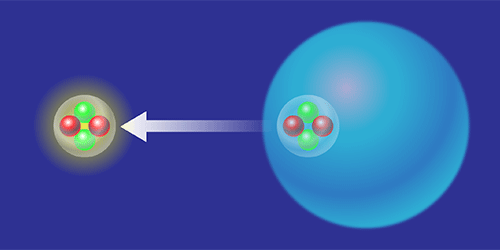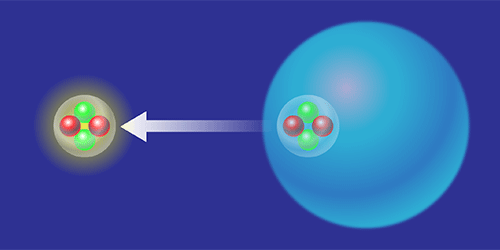The Fastest Alpha Emitter
The nucleus of a heavy atom like lead buzzes with more than a hundred protons and neutrons. Accounting for all of these particles in the best microscopic model of the nucleus, the shell model, and performing a calculation is often beyond the reach of today’s most powerful computers, says Dariusz Seweryniak of Argonne National Laboratory, Illinois. This computational problem applies even for seemingly simple processes like the alpha decays Seweryniak studies. An alpha decay is the emission of an alpha particle (two protons plus two neutrons), and Seweryniak and his co-workers, including Argonne colleague Kalle Auranen, have now detected one of the few heavy-atom alpha decays that can be predicted with shell-model calculations.
Since the 1920s, physicists have had a basic picture of alpha emission: protons and neutrons within the nucleus “preform” an alpha particle, which then escapes by tunneling through a potential barrier. Using the shell model, preformation in tellurium-104, which decays to tin-100, is easier to calculate than preformation in other alpha emitters. That’s because tellurium-104’s nucleus can be described as two neutrons and two protons moving outside the tightly bound tin-100 core.
Unfortunately, tellurium-104 is too short lived to study directly. Instead, the researchers created tiny amounts of a heavier isotope, xenon-108, by fusing nickel with iron. They then looked for two alpha particles: one from xenon-108 decaying to tellurium-104, the other from tellurium-104 decaying to tin-100. So far, they have detected two of these double-alpha events, and they have placed an upper limit of 18 ns on the tellurium-104 half-life. The measured lifetime limit is in line with shell-model calculations, which predict that alpha preformation in tellurium-104 is several times more likely than in the alpha emitter polonium-212, a benchmark for shell-model calculations. Tellurium-104 is now also the fastest known alpha emitter—though this finding is more fun than fundamental.
This research is published in Physical Review Letters.
–Jessica Thomas
Jessica Thomas is the Editor of Physics.





